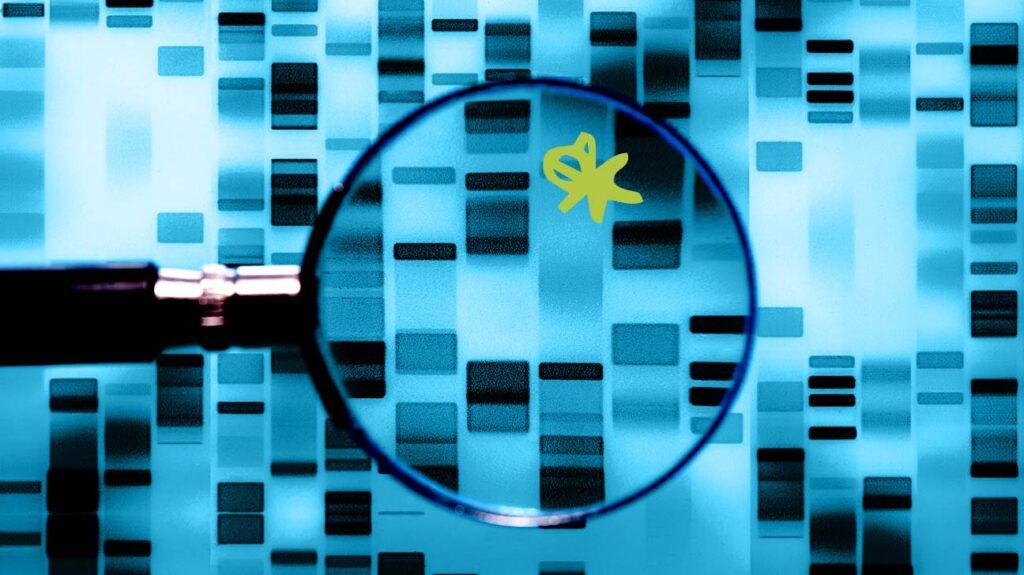
- Alzheimer’s disease is the commonest form of dementia, causing up to 70% of the 55 million dementia cases worldwide.
- Around half of those who develop Alzheimer’s disease have a variant of one gene — APOEe4— that increases the risk of developing the condition.
- This gene variant prevents cells clearing the beta-amyloid plaques that are characteristic of Alzheimer’s disease.
- Now, a study in nematodes and mice has identified a molecule that can inhibit APOEe4 and allow the cells to clear these beta-amyloid deposits, and potentially alleviate Alzheimer’s disease symptoms.
With an aging global population, dementia is a growing concern worldwide. A recent forecast by
Of these dementia cases, according to the
For dementia, the greatest risk factor is aging — with the likelihood of developing dementia increasing each year
Genetics can also influence whether a person develops dementia: About 1% of cases of Alzheimer’s disease are entirely caused by genes, and other genes increase the risk of developing Alzheimer’s.
The gene that expresses
Dr. Emer MacSweeney, CEO and medical director at Re:Cognition Health, told Medical News Today:
“In 2018, it was shown those with an APOEe4 gene are less able to clear waste products from the brain and, therefore, more susceptible to building up toxic levels of amyloid and tau protein, which is the hallmark of Alzheimer’s disease. The toxic amyloid and tau protein relentlessly destroy further brain cells, with the progression of the characteristic symptoms of [Alzheimer’s disease].”
Now, a team led by researchers at the University of Arkansas for Medical Sciences have found a molecule that binds to APOEe4and inhibits its harmful effects. They suggest it may form the basis for a new treatment for Alzheimer’s disease with a genetic basis.
The research is published in Communications Biology.
Dr. MacSweeney, who was not involved in the research, welcomed the study.
She said: “This study focuses on the role of the APOE gene, specifically the APOEe4 allele, in Alzheimer’s disease and explores a potential therapeutic strategy using small molecules to target APOEe4. The research combines genetic association studies, cellular mechanism investigations, computational modelling, and experimental validation.”
Studies have shown that APOEe4 has several effects, including
This latest study found that APOEe4 blocks genes responsible for
When beta-amyloid builds up it forms plaques on and around nerve cells, which is thought to drive the cognitive impairment and other symptoms that are characteristic of Alzheimer’s disease.
The researchers used in vitro and in vivo models in both
In molecular models, they first identified the site on DNA where APOEe4 binds to inhibit autophagy. They then investigated molecules that could block this region to prevent APOEe4 binding, allowing autophagy of beta-amyloid to continue.
One molecule — CBA2 — bound to a stable “pocket“ region on APOEe4, blocking its activity.
Dr. Heather M. Snyder, Ph.D., Alzheimer’s Association vice president of Medical and Scientific Relations, not involved in this study, commented on its findings, noting that:
“It is exciting to see advances in technology that may accelerate therapy discovery. And it is exciting that this newly announced research is looking at a novel and understudied therapeutic target — APOEe4 and its actions in the brain. But the research is very preliminary; it is being conducted in mouse and other animal models of Alzheimer’s. We are still far from knowing whether this experimental treatment will be safe and effective in people.”
Once the molecule bound to the stable region, it inhibited the gene, as Dr. MacSweeney explained to MNT: “The lead compound, CBA2, is found to selectively bind to this pocket, demonstrating efficacy in restoring autophagic transcription in APOEe4-expressing models, including primary astrocyte cultures and T98G cells.”
In C. elegans nematodes genetically altered to show Alzheimer’s disease-like changes, CBA2 significantly reduced the build up of beta-amyloid, and reversed the decline in
When researchers treated the mice modified to express APOEe4, expression of the autophagy genes increased. Dr. MacSweeney told MNT that the results were encouraging, but urged caution.
“In mice with APOEe4, CBA2 boosts the activity of key genes linked to cleaning up harmful substances in the brain, an important part of Alzheimer’s. However, the effects are stronger in mice with APOEe4 than in those with APOEe4,” she explained.
“While these findings are positive, more research and testing in humans are needed to confirm CBA2’s potential benefits for Alzheimer’s,” she added.
The researchers suggest that CBA2 might form the basis of treatment to help avoid amyloid build up in people with the gene.
“CBA2, identified as a promising therapeutic compound, demonstrated effectiveness in mitigating APOEe4-associated issues in both worms and mice. If proven safe and effective in humans, CBA2 could represent a targeted treatment to address molecular and behavioural aspects of [Alzheimer’s disease], particularly for individuals carrying the APOEe4 allele.”
– Dr. Emer MacSweeney
Dr. MacSweeney welcomed the findings, saying that “[t]his is the first time a potential compound to specifically block the harmful effects of APOEe4 has been described.”
“These results suggest hope, particularly for the 25% of the population who inherit one copy of the APOEe4 gene and are three times more likely to develop [Alzheimer’s disease] between ages 65-85, than an individual who does not have an APOEe4 gene. And the 2-3% of the population who inherit two APOEe4 genes; these individuals are 12-15 times more likely to develop [Alzheimer’s disease] than the general population,” she told us.
This optimism was echoed by Dr. Snyder, who suggested that targeting APOEe4 might form part of a multifaceted approach to Alzheimer’s disease treatment.
“We know the underlying biology of Alzheimer’s is complex, and therefore that effective treatment is likely going to be a combination approach that will be personalized to each individual,” said Dr. Snyder.
“The Alzheimer’s Association envisions a time in the relatively near future when there are many approved treatments that address Alzheimer’s in multiple ways across the entire course of the disease, and that can be combined into powerful combination therapies that more effectively slow and even stop the disease,” she added.
